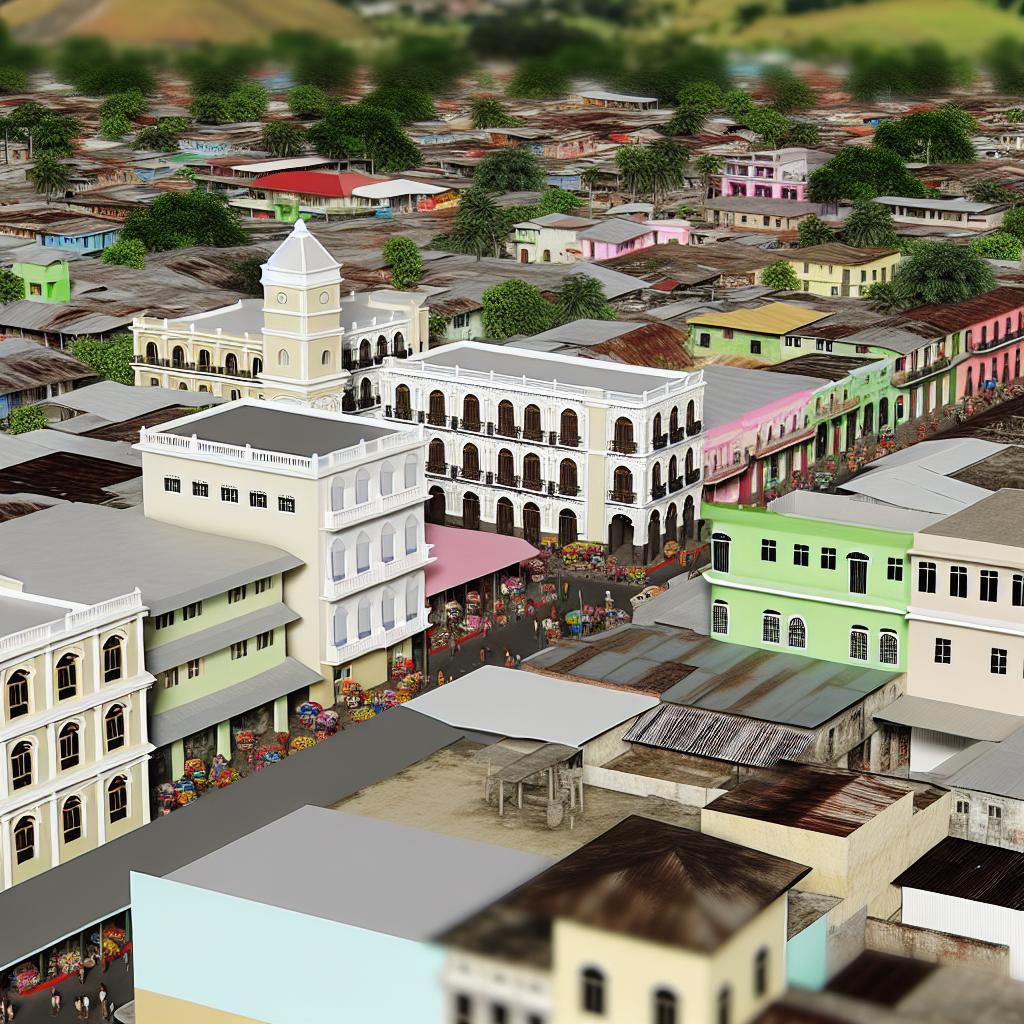Contents
Geographical Location and Climate
Mazatenango is strategically positioned in the southwestern region of Guatemala within the department of Suchitepéquez. It lies at an elevation of approximately 375 meters above sea level, providing it with a unique geographical advantage. This location, coupled with its tropical climate, plays a significant role in shaping the local lifestyle and economy. The climate is divided into two main seasons: the wet season, extending from May to October, and the dry season, spanning from November to April. During the wet season, the city experiences abundant rainfall, which is essential for the agricultural sector, a backbone of the local economy. The dry season, characterized by less precipitation, allows for different agricultural activities and outdoor events.
Although Mazatenango is blessed with natural beauty and fertile lands, it is also a region susceptible to natural disasters, particularly earthquakes. Guatemala, positioned on the Pacific Ring of Fire, is prone to seismic activity. These earthquakes can cause significant damage to infrastructure and affect the lives of Mazatenango’s residents. Despite this vulnerability, the community has shown resilience by implementing construction techniques and disaster response strategies designed to mitigate earthquake impacts.
Historical Background
The history of Mazatenango is rich and deeply rooted in its indigenous and colonial past. Before the arrival of Spanish colonizers, the region was inhabited by various indigenous groups who contributed to the local culture and traditions that persist today. With the advent of colonialism, Mazatenango became an important agricultural center, significantly contributing to the colony’s economy by serving as a hub for the production and trade of various crops. These historical influences are still visible in the city’s architecture, where colonial buildings coexist harmoniously with modern structures. This blend of old and new provides a visual narrative of Mazatenango’s transformation over the centuries, making it an interesting subject for those studying the urban development trends in Guatemala.
Economy and Industry
Mazatenango’s economy is predominantly agricultural, with emphasis on products like coffee, sugar cane, and tropical fruits. These industries not only sustain the local population but also contribute to exports, branding Mazatenango as a key player in Guatemala’s overall agricultural output. The cultivation techniques adopted by local farmers have evolved over generations, integrating traditional knowledge with modern practices to ensure sustainability and maximum yield.
In recent years, Mazatenango has also experienced a gradual increase in commercial activities. This commercial growth is visible in the rise of new businesses and markets that cater to the everyday needs of the citizens. The business landscape is adapting to modern consumer demands, further boosting the local economy. Although tourism does not dominate Mazatenango’s economic landscape, the influx of visitors during cultural events does provide a seasonal boost to local businesses, highlighting the interconnectedness of culture and commerce.
Cultural Significance
Mazatenango stands out for its rich cultural life, which is vibrantly displayed during festivals and communal gatherings. The most notable cultural event is the annual Mazatenango Carnival, a significant draw for both locals and tourists. This event features an array of activities such as parades, music, dance, and the wearing of traditional costumes that reflect the deep-rooted cultural heritage of the region. These cultural festivities play a crucial role in preserving local traditions and fostering community spirit. They offer a platform for cultural expression and highlight the diversity and vibrancy of Mazatenango’s social fabric.
Transport and Accessibility
The transport infrastructure in Mazatenango is well-developed, facilitating easy access to and from the city. The city is interlinked by a network of roads connecting it with major urban areas across Guatemala. For daily commutes, the local populace predominantly relies on buses, which are an affordable and widely used form of public transportation. In addition to public transport, car rental services provide flexibility for tourists and residents wishing to explore at their own pace. The accessibility and connectivity of Mazatenango make it a convenient location for both business operations and tourism-related activities.
Education and Infrastructure
Mazatenango has made significant progress in education and infrastructure, aligning with the needs of a growing urban population. The city is home to a variety of educational institutions that range from primary to secondary and tertiary levels, both in the public and private sectors. These institutions are equipped to provide quality education, preparing the younger generation for the challenges of an evolving world.
The city’s infrastructure development is ongoing, with continuous improvements in roads, healthcare facilities, and public utilities. Efforts to enhance these services are essential in raising the standard of living and ensuring that the city can accommodate its growing population and economic activities efficiently. Infrastructure improvements also play a crucial role in disaster preparedness, particularly in enhancing the city’s resilience to natural calamities such as earthquakes.
Further Reading and Resources
For a deeper insight into Mazatenango’s dynamics, a range of resources is available online. These include regional news platforms and local government websites that offer up-to-date information on cultural events, economic trends, and social programs. Interested readers can explore current initiatives and ongoing projects in Mazatenango through official local platforms. Such resources are invaluable for those keen on understanding the various aspects of Mazatenango’s growth and development.
